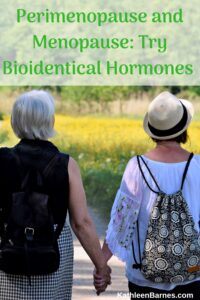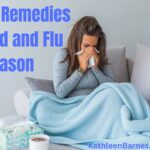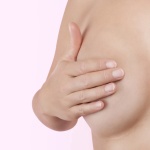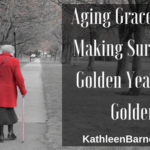All of us experience hormone swings as we age. Women’s hormonal fluctuations maybe be more noticeable than those that men experiences. In this ongoing series, we look for some explanations of what’s happening as women approach what our mothers called “The Change,” and how to embrace this important stage of life – and menopause that follows—happily and naturally.
Perimenopause
The next hormonal shift overlaps with a woman’s reproductive years. Symptoms of perimenopause, or the start of menopause and the end of childbearing years, may show up as early as the mid- to late 30s.
These range from hot flashes, night sweats and insomnia to weight gain, fuzzy thinking and redistribution of hair on the body. Again, the presence of xenoestrogens and stress contribute to these symptoms.
Women of other cultures rarely experience the intensity of perimenopausal symptoms that Western women report. So does that make perimenopause a lifestyle disease, as well?
Emphatically yes, says Holly Lucille, doctor of naturopathy, registered nurse and past president of the California Naturopathic Doctors Association.
“Diet and lifestyle are absolutely essential to a healthy hormonal system,” which she explains in her book, Creating and Maintaining Balance: A Women’s Guide to Safe, Natural, Hormone Health. “The biochemistry of the body is based on vitamins and minerals. If we compromise food and lifestyle choices, we are not getting the nutrients necessary to have a healthy endocrine system.”
Weight gain is a particular concern during perimenopause. In their book, From Belly Fat to Belly Flat, Randolph and Genie James, co-founders of the Natural Hormone Institute, advocate a specific eating plan to override belly fat and related accumulating effects of excess estrogen.
“In perimenopause, progesterone production usually declines rapidly, more than 120 times faster than estrogen or testosterone production. That’s what aggravates the symptoms,” Randolph notes. “Because women in perimenopause are usually still menstruating, they think their hormones are okay.”
“The more body fat you have, the more estrogen tips the hormonal imbalance,” says Lucille. “Those fat cells hold on to toxins and place more burden on the liver, making it unable to effectively metabolize those extra estrogens,” which are stored in body fat and brought into the body as xenoestrogens. “At the end of the day, estrogen is a messenger, and its message is to tell cells to grow and proliferate. That’s what we don’t want at this age.”
When estrogen becomes dominant, several things happen, including a more rapid release of insulin from the pancreas that triggers sugar cravings. “It’s not a willpower problem,” Randolph assures. “Too much estrogen causes you to pack on the pounds in the belly area and belly fat produces more estrogen. It’s a vicious cycle.”
Lucille considers perimenopause the opposite of puberty and counsels, “While we are dealing with these changes, bringing some hormones on board for a short time can be a valuable tool.” However, she cautions, replacing anything isn’t the issue. “You have to look at the big picture,” she avers. “Putting hormones into a toxic body is like putting gas into a dirty gas tank. We have to restore function first.”
Bioidentical hormone replacement therapy (BHRT) has been a boon for millions. Results of the Women’s Health Initiative, a national study of women’s health between 1991 and 2002 involving more than 160,000 postmenopausal women aged 50-79, inspired many women to switch to biodientical hormoens in the early part of the 21st century when research began to show the dire consequences of synthetic hormone replacement, including increased risk of breast cancer, heart disease and Alzheimer’s disease. Most holistic doctors agree the bioidenticals have few, if any, negative side effects.
Northrup calls bioidenticals “nature’s ideal design,” due to the prescription of individually tailored doses, custom-made by compounding pharmacies. Bioidentical hormones are modified in such a way that the molecular structure is identical to the hormones normally produced by female human body.
Menopause
If a woman has had no menstrual periods for 12 months, she is considered to be in menopause. However, Lucille asserts, “Menopause is not a disease.” Northrup touts menopause as the most creative and precious time of a woman’s life; it is often a time of spiritual awakening and self-fulfillment.
“When the female brain passes menopause, the brain changes,” advises Northrup. “In a sense, we move from alternating current to direct current; I believe that this is the way the brain encodes wisdom.”
“Yet there are women in their 60s that are still having hot flashes. What should they do?” queries Northrup. Natural alternatives exist that are safe and effective. “Many herbs have been used for millennia that have estrogen-like properties, but do not have estrogen side effects,” Northrup says. “There is huge confusion about this: Plant hormones have different structures than mammalian hormones and cannot act as growth hormones. If you have too much estrogen, these plant hormones can actually protect against excess stimulation.”
Her favorite is pueraria mirifica, which has helped relieve perimenopausal and menopausal symptoms in 80 percent of her patients within days. (Because the method of harvesting and processing supports effectiveness, Northrup likes Solgar brand PhytoGen.) She also uses maca, from Peru, for its phytoestrogens, vitex, black cohosh and omega-3 fatty acids such as those found in salmon, for ongoing hot flashes.
“Some women go through these years and truly take their place as women of wisdom and power. They don’t need any additional hormone support; they have enough life energy coming,” comments Northrup. “Others may need to take some kind of hormone support their entire lives. Either way, no one should suffer.”







